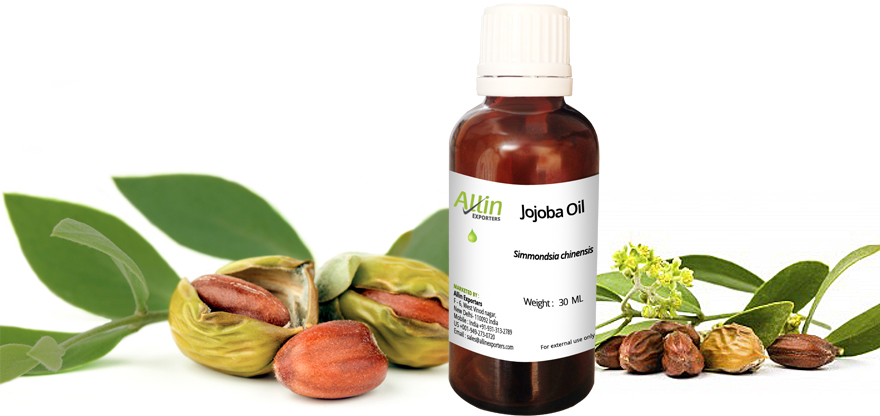A Slight Overview of Jojoba Oil:
Jojoba Oil grows in the dry region of the Northern Mexico and the Southwestern US. Jojoba also produces some wax from the seeds which is used for the medicines. You can apply Jojoba Oil directly to the skin for treating problems such as psoriasis, sunburn, chapped skin and acne. Topically, it can also be used for the regrowth of the hair like balding. Owing to the emollient properties, the application of Jojoba oil helps in making the skin soft and supple. And it unclogs the hair follicles. For balding problems, some people think that unclogged hair follicles more likely to produce new hair. Basically, Jojoba is native to northwestern Mexico, southern Arizona and southern California.

Unrefined Jojoba looks like as a clear golden liquid with a slightly nutty odor at room temperature. When Jojoba oil is compared to other vegetable oils, it is shelf stable, because it doesn’t carry any triglycrides, unlike as most vegetable oils like as coconut oil and grape seed oils. Rather, it holds an oxidative stability. Actually, Jojoba Oil is a mixed combination of long chain monounsaturated liquid wax esters. Around 1960, an endangered species hunted for their oil known as sperm oil, comprised of 90% ester. Back then, it was used for thousands of cosmetic products and for health. After that in 1971, importing of whale oil outlawed and discovered oil that is Jojoba Oil.
How the Jojoba Oil is extracted:
In a process, jojoba oil is extracted from the seeds of jojoba plant by pressing alone and followed by the leaching, scientifically called as Simmondsia Chinesis. Processing of seeds to carry out the oil is a mechanical pressing. With a high self-life, jojoba oils can be stored for a long time because it is a very stable liquid. Jojoba plants are dioecious plants. Only from their flowers, we can discern the gender of jojoba plant. In real, seeds are produced by the female plants which are pollinated by the male plants. The leaves of Jojoba plants are aerodynamic shape, in a spiral effect. The pure form of the jojoba oil is bright and golden in color whereas the processed form is transparent and clear.

Chemical composition of Jojoba Oil:
Jojoba plant is the only plant that produces a significant quantity of liquid was esters. Jojoba esters are the combination of almost entirely of alcohols and straight-chain acids. These acids are the mixture of docosanoic and eicosanoic, holding the some little quantity of oleic and palmitoleic. Research says about the presence of compounds like tocopherols in jojoba and the alpha, delta and gamma tocopherols are the forms of vitamin E, which eliminates the free radicals. Practically, the oil is colorless and odorless and a composition of straight chain monoester of C20 and C22 acids.
Amazing Benefits of Jojoba Oil:
Dermatology: Commonly, jojoba oils are used for dermatological preparations. Jojoba is used for animal, clinical and other purposes like in cosmetics and for other topical preparations at some % of concentration.
Extremely Safe: Jojoba oil is non-comedogenic, non-allergenic and non-toxic for use. Therefore, it won’t clog pores and won’t cause anything that relates to allergic reactions. Yes, it is not even irritant, so can be easily used on the skin and around the eyes.
Resource of Minerals and Vitamin E: It holds a variety of tocopherols which create vitamin E and other natural minerals. The best thing is vitamin E which highly promoted for a clear and healthy skin.
Hair care: Regular massage of jojoba oil in hair by diluting with carrier or regular hair oil helps to provide a shinier texture to the hair. It also aids in fighting common hair problems such as hair fall and dandruff.

By now, we hope that you have learnt a lot of about jojoba oil and its health benefits. So, what are you waiting for? Don’t hesitate to look for a premium quality unadulterated jojoba oil for the better health of your skin, hair and what not. Come back with your feedback soon.